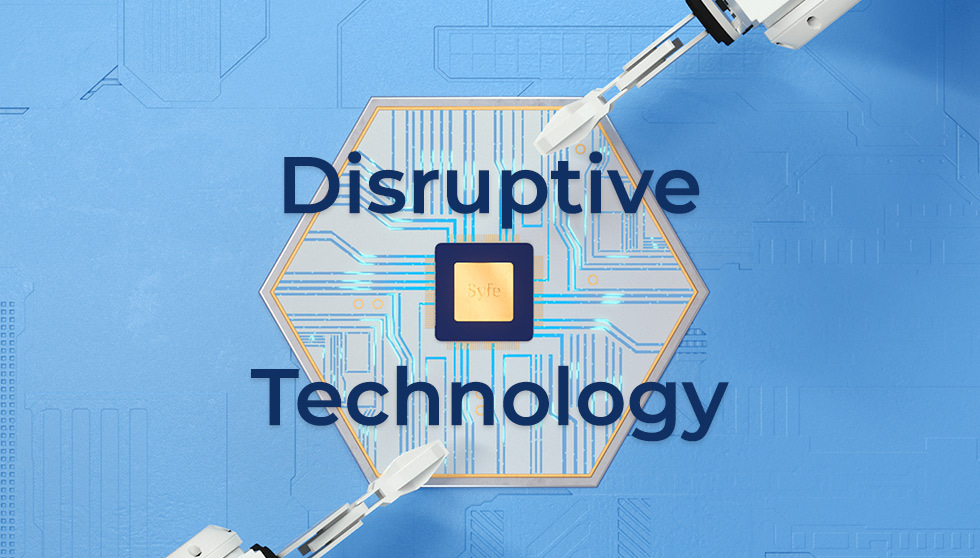
Breakthrough technological innovation has transformed our lives. In the words of Klaus Schwab, Founder of the World Economic Forum (WEF): “We stand on the brink of a technological revolution that will fundamentally alter the way we live, work, and relate to one another.”
What is disruptive technology?
Popularised by scholar Clayton Christensen, the term “disruptive technology” refers to innovations that significantly change an existing industry, product, or service and/or create an entirely new one. Recent disruptive technology examples include the Internet of Things (IoT), cloud computing, fintech and 3D printing. The automobile, electricity service, and television were also once disruptive technologies in their own times.
Disruptive technologies alter the way that consumers, industries and businesses operate. For customers, these changes typically translate to decreased costs, improved user experience, and access to products and services that were previously reserved for a specific target segment. Disruptive technologies have also opened up new ways for businesses to deliver services and interact with customers.
Why invest in disruptive technologies?
Investing in disruptive technologies carries significant risk as they can take years to be adopted by consumers or businesses. That said, disruptive technology stocks and funds are often touted for their high returns precisely because of their higher risk.
However, investors should not discount the disruptive technology theme for its growth potential in the long-term. Technology is advancing at a rapid rate and investors not exposed to tomorrow’s front runners risk being left behind by a fast-changing world. As illustrated by the infographic below, today’s business leaders may become obsolete at the turn of the next decade.
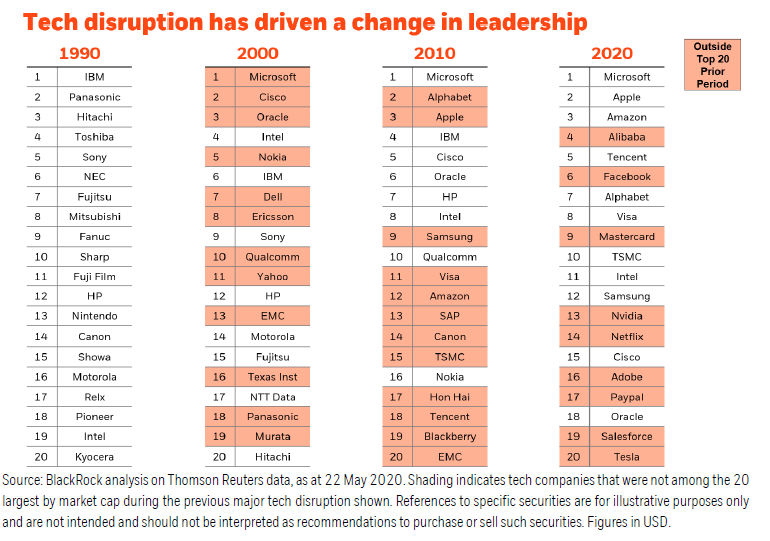
With that in mind, investors should consider disruptive technologies to future-proof their portfolios, if not for their attractive returns.
A better way to approach disruptive technology
Investing in disruptive technology is notoriously difficult with the risks it entails. Investors have to do their homework to accurately pinpoint which technology will drive the next big wave of disruption, find reasonably priced opportunities and monitor their investments consistently. For those who don’t have the time to analyse individual stocks, ETFs provide broad exposure to a basket of securities that span multiple trends and innovations.
Syfe’s Disruptive Technology portfolio is a ready-made portfolio of such ETFs. The portfolio invests in companies at the leading edge of technologies and trends that are reshaping the future such as AI, robotics, cloud computing, fintech, esports, online retail, cybersecurity and more.
In order to manage risk, the Disruptive Technology portfolio is globally diversified across developed and emerging markets. Keeping in mind the ever-changing nature of disruptive technologies, emerging innovation themes are also actively monitored for possible inclusion.
Following our April 2022 semi-annual portfolio re-optimization, the portfolio now holds the following:
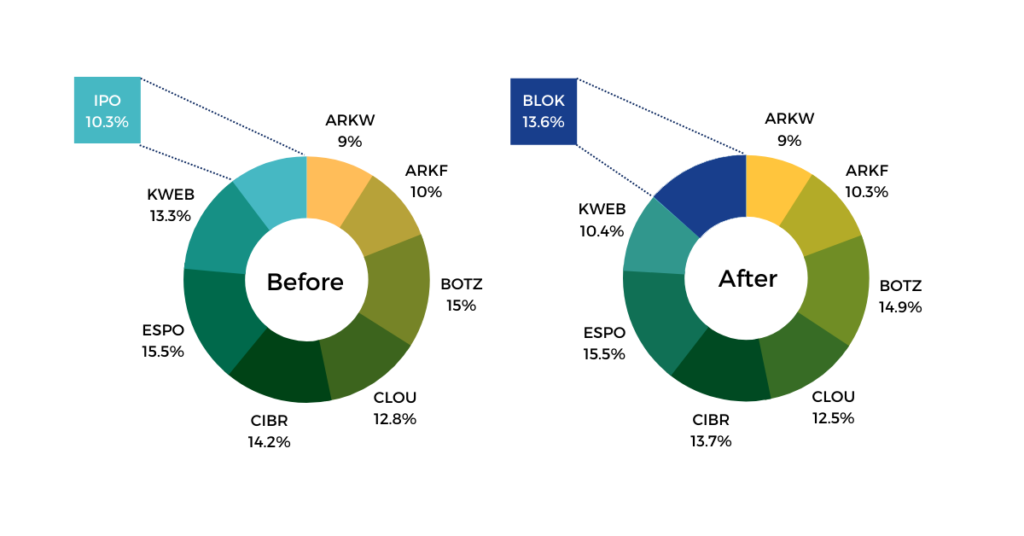
We take a closer look at underlying portfolio holdings at the forefront of these disruptive innovations.
Tapping into blockchain: BLOK
Buying actual Bitcoin and other digital currencies can be fraught with risks and volatility. Amplify Transformational Data Sharing ETF (BLOK) is an indirect way to access cryptocurrency assets in a safer manner. It invests broadly in blockchain, the technology behind Bitcoin and other digital coins, in addition to cryptocurrency-related companies.
BLOK is actively managed and it is one of the largest blockchain ETFs on the market. Top holdings include Silvergate Capital, a crypto bank, and Nvidia, which makes cryptocurrency mining processors (CMP). MicroStrategy, the third-largest holding within BLOK, has made Bitcoin acquisition a key mandate too. As such, it serves as a Bitcoin proxy investment for many investors.
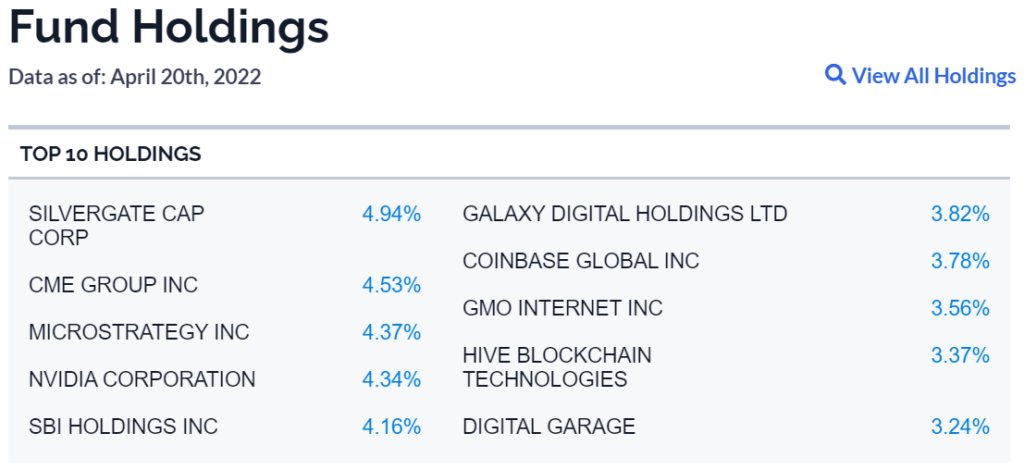
Harnessing the robot revolution: BOTZ
We are on the cusp of a paradigm shift where robotics and AI play an increasingly important role in our daily lives. From robotic automation in the industrial space to unmanned vehicles and drones, the robot revolution has disrupted and transformed multiple industries.
The Global X Robotics & Artificial Intelligence ETF (BOTZ) is a targeted play in this sector, investing in an index of companies that stand to gain from the increased adoption of automation, robotics and AI.
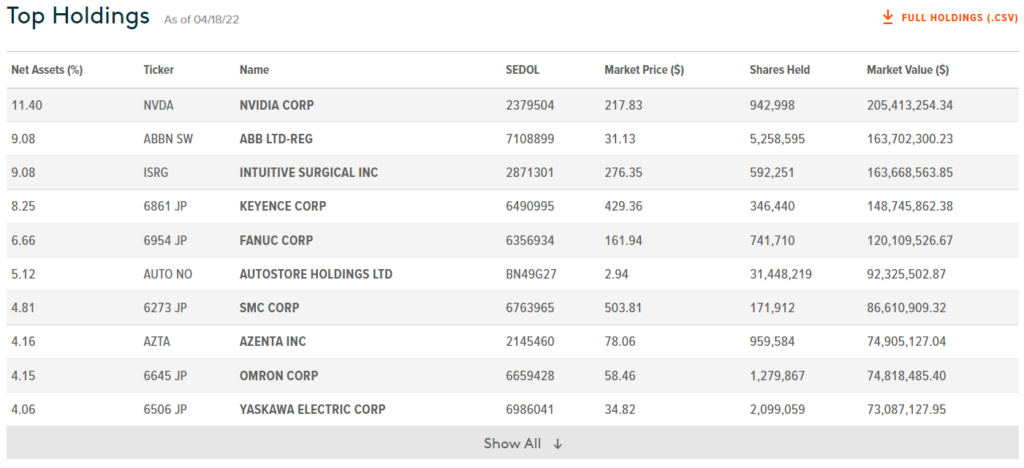
Although there is a heavy focus on the industrials and information technology sectors, BOTZ also provides exposure to the health care, financials and consumer discretionary sector.

The evolution of the Internet: ARKW and KWEB
Although the internet is no longer considered a disruptive technology, it is host to many disruptive innovations of today such as cloud computing, big data, blockchain technology and IoT. Therefore, investing in internet-based companies gives investors a certain degree of exposure to multiple disruptive technologies that will define the future.
The ARK Next Generation Internet ETF (ARKW) is one ETF that provides broad, multi-cap exposure to trends such as big data, artificial intelligence (AI), blockchain, internet of things, social platforms, and cloud services. Examples include big names like Tesla and Coinbase.
Interestingly, two significant holdings are Grayscale Bitcoin Trust and Coinbase, both cryptocurrency-related companies. As such, investing in ARKW also gives investors some exposure to cryptocurrencies.

While ARKW has a geographical focus on the US, the KraneShares CSI China Internet ETF (KWEB) can be said to be its Chinese equivalent. KWEB invests primarily in Internet and Internet-related companies based in China and Hong Kong. Investors will recognise industry leaders like Tencent, Alibaba and JD.com amongst KWEB’s top holdings.
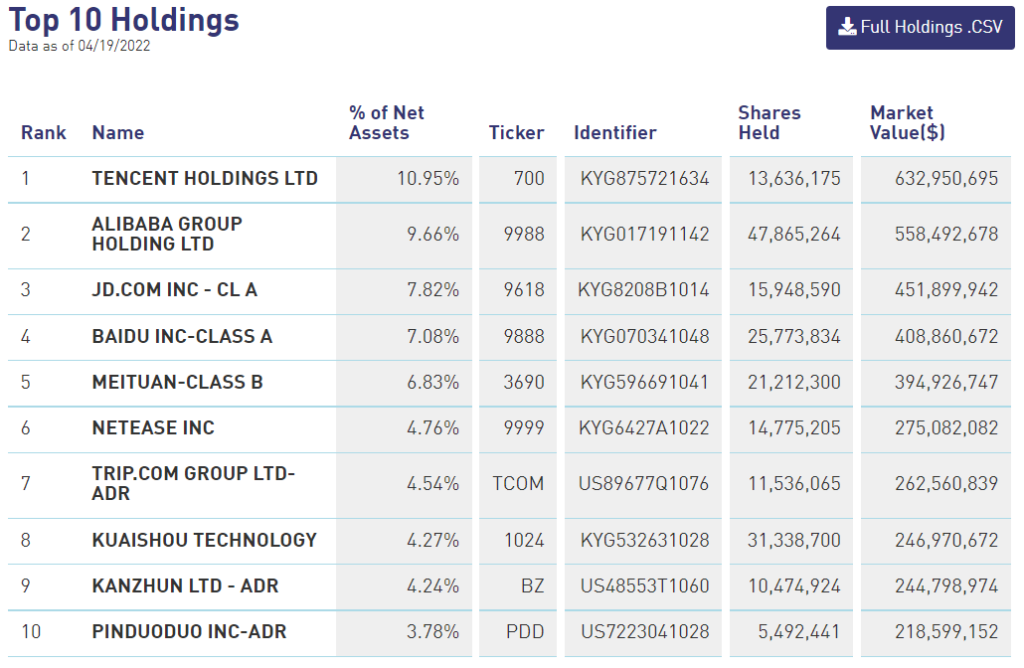
Companies held by KWEB are likely to benefit from China’s fast-growing internet user population and the increasing domestic consumption by China’s growing middle class.
Finishing strong in fintech: ARKF
Technology has fundamentally changed the ability of financial institutions to interact with customers and conduct transactions. According to a joint study by the WEF and Deloitte, fintechs have defined the direction, shape and pace of innovation across almost every sub-sector of financial services.
The ARK Fintech Innovation ETF (ARKF) capitalises on this megatrend. ARKF is an actively-managed ETF that provides exposure to fintech innovations including mobile payments, digital wallets, peer-to-peer lending, blockchain technology, and risk transformation. Investors of the fund are exposed to top names in the fintech scene like Block, Coinbase, Shopify, and Twilio.

More than fun and games: ESPO
Gaming has become a serious business. According to data from Statista, it is estimated that the global gaming market will amount to US$268.8 billion annually in 2025. The Vaneck Vectors Video Gaming & eSports UCITS ETF (ESPO) invests in companies involved in video game development, eSports, and related hardware and software. To paint a sharper picture of the ETF, its top holdings include Nintendo and Activision Blizzard.

Empowering the future: CLOU
It is estimated that 80% of the technologies that will change the way we live and work are cloud-based. This forecast comes from the WEF, which further predicts that the value of cloud computing will grow to US$623 billion by 2025.
As such, we include the Global X Cloud Computing ETF (CLOU) in our Disruptive Technology thematic portfolio. CLOU invests in companies involved in cloud-based computing, including firms that offer computing Software-as-a-Service (SaaS), Platform-as-a-Service (PaaS), Infrastructure-as-a-Service (IaaS), managed server storage space and data center real estate investment trusts. It is one of few ETFs that offer targeted exposure to cloud computing.
Other than capturing the opportunity of the cloud, CLOU offers diversification through investing in data center REITs, companies involved providing Software-as-a-Service (SaaS), Platform-as-a-Service (PaaS), Infrastructure-as-a-Service (IaaS), and edge computing infrastructure and hardware. This means that instead of having giants like Microsoft and Amazon dominate the portfolio, names like Akamai Technologies, Anaplan and Digital Realty Trust make up its top holdings.
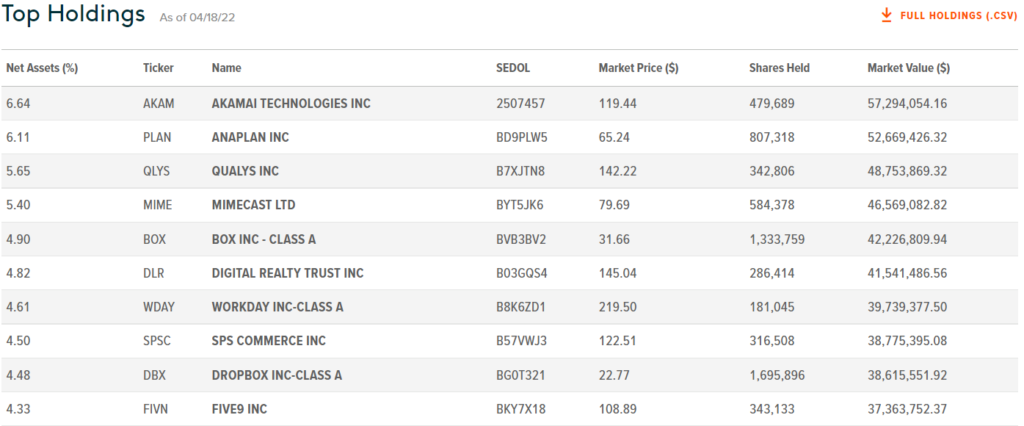
Protecting the cyberspace: CIBR
With the rise of disruptive technologies comes the rise in cybersecurity threats. This makes cybersecurity an essential component to the continuity of the disruptive technologies, and one of the most durable disruptive growth themes.
The First Trust NASDAQ Cybersecurity ETF (CIBR) helps investors access this theme. It tracks companies involved in the building, implementation, and management of security protocols, providing protection to data and network operations. These include Crowdstrike, Zscaler, and Cloudflare.

Easing into disruption
Though exciting, investing in disruptive technology can be intimidating. As a word of caution, investors should have an already well-diversified portfolio before investing in disruptive technology due to its risky nature.
Syfe’s Disruptive Technology portfolio is one way to ease into the megatrend. With eight ETFs representing different branches of the broader disruptive technology theme in fairly equal allocations, investors can worry less about the volatility of specific ETFs.
With no minimum investment, no lock-in periods and no brokerage fees, you can start where you’re comfortable. As an added advantage, we’ll fully manage your portfolio with free dividend reinvestment and automatic rebalancing, for fees as low as 0.35% per year. If you’re looking to ride the wave of disruption in a more controlled manner, consider the Syfe Select Disruptive Technology portfolio!






You must be logged in to post a comment.